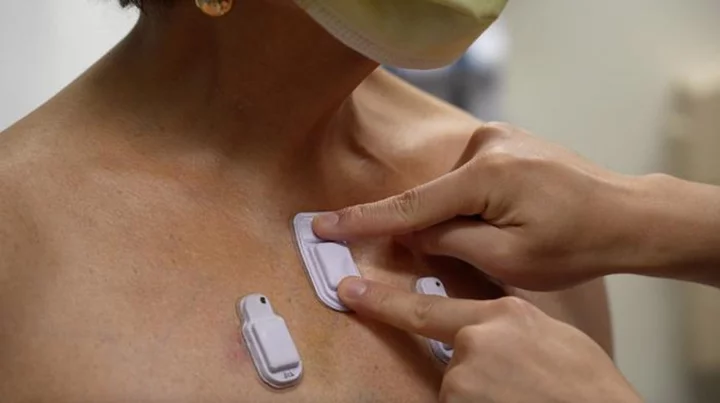New technology allows doctors to listen to the gurgle of people’s digestion and other noises to monitor their health.
Doctors use sound inside their patients’ bodies to gather a host of information, listening to the air as it moves through their lungs or the beats of their heart, as well as the processing of food. They can provide important ways to understand people’s health – and noticing when they change or stop could be life-saving.
But there is no easy way for doctors to monitor those things continually, or from a distance. Now a new breakthrough wearable allows doctors to continuously track those sounds by sticking technology to people’s skin.
The soft, small wearables can be attached on almost any part of the body, in multiple locations, and will track the sounds without wires.
Researchers have already used the device on 15 premature babies, as well as 55 adults, monitoring people with a variety of different conditions such as respiratory diseases. They found that the devices performed with clinical-grade accuracy – but also that they provided entirely new ways of caring for people.
“Currently, there are no existing methods for continuously monitoring and spatially mapping body sounds at home or in hospital settings,” said Northwestern’s John A Rogers, a bioelectronics pioneer who led the device development.
“Physicians have to put a conventional, or a digital, stethoscope on different parts of the chest and back to listen to the lungs in a point-by-point fashion. In close collaborations with our clinical teams, we set out to develop a new strategy for monitoring patients in real-time on a continuous basis and without encumbrances associated with rigid, wired, bulky technology.”
One of the important breakthroughs in the device is that it can be used at various places at once – with researchers likening it to having a collection of doctors all listening at once.
“The idea behind these devices is to provide highly accurate, continuous evaluation of patient health and then make clinical decisions in the clinics or when patients are admitted to the hospital or attached to ventilators,”said Dr Ankit Bharat, a thoracic surgeon at Northwestern Medicine, who led the clinical research in the adult subjects, in a statement.
“A key advantage of this device is to be able to simultaneously listen and compare different regions of the lungs. Simply put, it’s like up to 13 highly trained doctors listening to different regions of the lungs simultaneously with their stethoscopes, and their minds are synced to create a continuous and a dynamic assessment of the lung health that is translated into a movie on a real-life computer screen.”
The work is described in a new paper, ‘Wireless broadband acousto-mechanical sensing system for continuous physiological monitoring’, published in Nature Medicine.
Read MoreSpaceX is launching the world’s biggest rocket – follow live
Instagram users warned about new setting that could accidentally expose secrets
SpaceX to launch world’s biggest rocket again after first attempt ended in explosion









